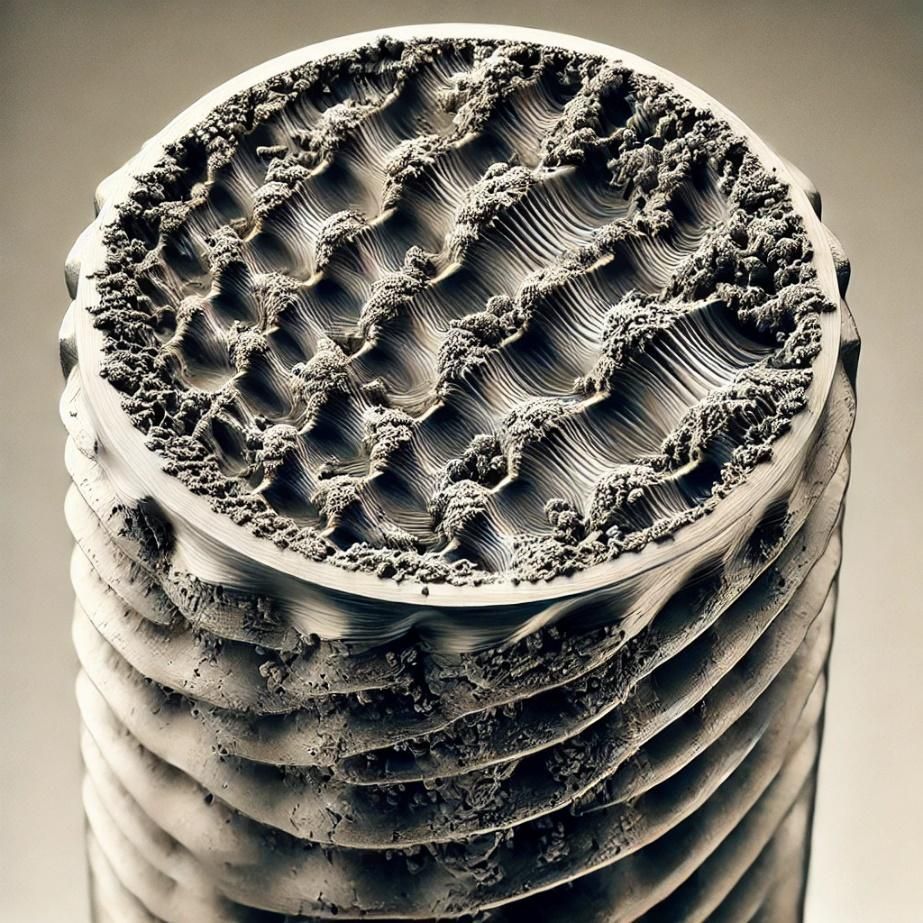Steel
What is steel?
Steel is an alloy of iron and carbon containing up to 2.1% carbon by weight. It is one of the most widely used materials in the mechanical industry due to its combination of strength, ductility, and versatility.
Steels can be classified based on their carbon content, additional alloying elements, and mechanical properties.
Types of Steel
1. Carbon Steels
- Low-carbon steels (up to 0.3%): Used for structural applications, piping, and automotive components. These steels are easily weldable and formable.
- Medium-carbon steels (0.3–0.6%): Used for mechanical components that require higher strength, such as shafts and gears.
- High-carbon steels (over 0.6%): Used for cutting tools, springs, and blades. These steels offer high hardness but lower ductility.
2. Alloy Steels
- Stainless steels: Contain at least 10.5% chromium and offer high corrosion resistance. Used in harsh environments and hygienic applications.
- Manganese steels: Contain up to 1.65% manganese, increasing wear resistance. Used for railway tracks and agricultural machinery.
- Chromium-molybdenum steels: Offer resistance to high temperatures and are used in boilers and engines.
Mechanical Properties of Steel
Tensile Strength
Tensile strength measures a steel’s ability to withstand tensile forces before breaking.
High-carbon and alloy steels exhibit significantly higher tensile strength than low-carbon steels.
Ductility
Ductility refers to the ability of steel to plastically deform without breaking.
Low-carbon steels have higher ductility compared to high-carbon steels.
Tables
Tabella 1: Composizione chimica tipica degli acciai
| Tipo di acciaio | Elementi principali | Proprietà chiave | Applicazioni |
|---|---|---|---|
| Acciaio al carbonio | Fe, C | Buona resistenza, formabilità | Strutture, settore automobilistico, utensili |
| Acciaio inossidabile | Fe, Cr, Ni | Resistenza alla corrosione | Ambienti aggressivi, industria alimentare |
| Acciaio al manganese | Fe, C, Mn | Resistenza all'usura | Binari ferroviari, macchine agricole |
| Acciaio al cromo-molibdeno | Fe, Cr, Mo | Resistenza alle alte temperature | Caldaie, motori |
Conclusion
Steel is an irreplaceable material in numerous industrial sectors due to its strength, versatility, and cost-effectiveness.
The various types of steel make it possible to select the most suitable alloy for each specific application, ensuring optimal performance and long-lasting components.
Investing in the production and use of high-quality steels enables companies to offer robust and reliable products that meet international standards.
Stainless steels, with their excellent corrosion resistance, are ideal for use in harsh environments and hygienic sectors such as food and medical industries.
Alloy steels, thanks to their advanced mechanical properties, are essential for high-performance applications in the aerospace and automotive industries.
The adoption of advanced steel processing technologies allows for the creation of high-quality products that combine strength, ductility, and durability, ensuring customer satisfaction.













